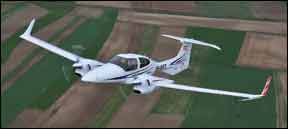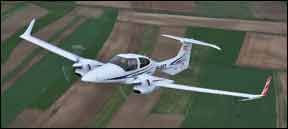When you put a sharp pencil to the concept, diesel engines should be a slam dunk against gasoline engines. Their fuel specifics are terrific, they have lots of torque and, potentially, they have long overhaul cycles. Modern ECU-based diesels have headroom on both performance and economy, so it’s realistic to expect improvements in both.

Yet, the market sort of stumbles along, even with avgas at $6-plus and looking increasingly threatened with extinction in Europe, if not in the U.S. If you add up recent production figures, gasoline aircraft engines continue to outsell diesel options by a wide margin. While it’s true that the diesels from Diamond are making inroads, it’s also true that Diamond is the only major OEM with a serious diesel program.
When I was on my way to Aero in April, I knew that Cirrus planned a major announcement and given the time and venue, I thought there was a good chance it might be a diesel option for the SR20 or SR22, even if it was just an intent announcement. Obviously, the news turned out to be a funding reveal for the Cirrus Vision jet. I won’t say I was disappointed, because I’m glad they’re moving forward with the jet—everyone should be. But a second OEM committing to diesel powerplants may be just the thing that this market segment needs to expand more rapidly.
There are several reasons it hasn’t thus far, in my view. The big one is lack of horsepower. The Austro AE300 we’re covering in this issue is topped out at 180 HP—that’s all there is, there ain’t no more. That’s not enough for a high-performance airplane like the SR22, which really needs at least 100 HP more. If Continental’s SMA-based four-cylinder scales up to six cylinders and proves viable, that may be just what’s needed. But it hasn’t happened yet.
Second, weight. The Austro engines are about 120 pounds heavier than the Thielert engines used in the same Diamond DA42 application. That’s nearly 250 pounds total. For a light aircraft with a 3600-pound gross weight, that’s 7 percent and it’s a big number. That forces an OEM to do one of two things: Certify at a higher weight or put the airframe on a serious weight reduction program. For the new DA42 VI, Diamond did both. This is expensive work and it takes the kind of significant investment that only Diamond, as the diesel leader, seems interested in making in the current market.
Diamond’s sister company, Austro GmbH, has invested on a similarly aggressive scale. It’s a Mach 1 rabbit to DeltaHawk’s or even Thielert’s plodding turtle. In my view, what’s going on here is that Austro and Diamond are trying to push the market hard with big investments and rapid R&D while the other diesel makers are happy with incremental investments as the market slowly, painfully comes along. Who’s right? It’s the kind of chicken-and-egg question that has dogged businesses from the dawn of time.
Austro and Diamond seem to be taking the Steve Jobs’ customers-don’t-know-what-they-want-until-they-see-it approach, while the other engine makers appear to be drifting with perceived market whims or just waiting for the buyers to declare themselves. Austro could have the edge in more advanced products, but it also has the expense of lots of overhead and R&D to earn back in eventual sales.
Another complicating factor is oil prices and trends. If prices collapse again—not impossible, given production and demand trends—where will that leave diesel? My guess is it will still be in the game, but its development will be stunted, meaning the market will continue to be what it has been so far: slow, baby steps forward with a lot of thoughtful pauses. —Paul Bertorelli





